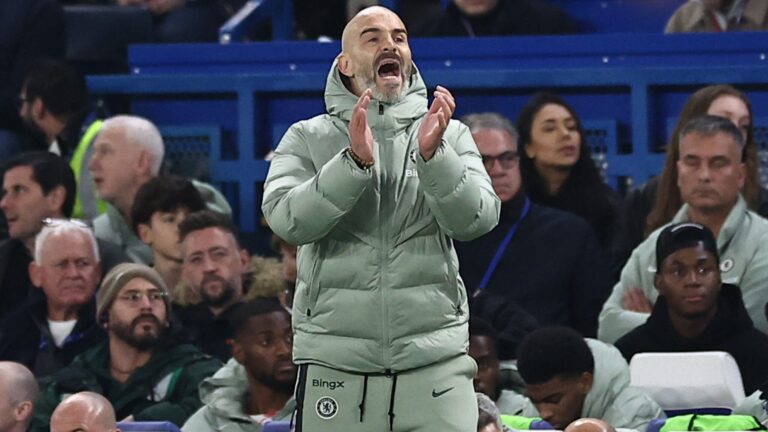Why Maya Le Tissier is the Key to England’s Defensive Revival
In the midst of England’s defensive challenges, with stalwarts like Maya Le Tissier waiting in the wings due to team selection decisions, the focus intensifies on how crucial defensive stability is for the Lionesses’ success. As injuries and retirements leave gaps, one standout player’s abilities are under scrutiny, sparking debates among fans and experts alike.
The Overlooked Star in England’s Back Line
England’s defence faces uncertainty after Maya Le Tissier‘s international opportunities have been limited, despite her proven track record. With players such as Millie Bright stepping away from the national stage and Leah Williamson dealing with ongoing setbacks, the team desperately needs a reliable anchor. Manchester United, however, has been vocal about her primary role, sharing on social platforms that Le Tissier has lined up as centre-back in 103 out of her 104 appearances for the club. This statement serves as a clear nudge against unconventional placements, highlighting her natural fit at the core of the defence. Her sole outing at right-back occurred during a Women’s League Cup match versus Durham in October 2022, a necessity born from injuries that prompted manager Marc Skinner to adjust his lineup. From that point, Skinner has centred his strategy around her, even appointing her as captain to underscore her dependability and command on the field.
Wiegman’s Stance on Player Positioning
Despite this, England manager Sarina Wiegman remains firm in her choices, stating that while Le Tissier excels consistently at centre-back, the team views her initial role as right full-back, with versatility as an added bonus.
Ian Wright’s Blunt Critique of the Decision
Football legend Ian Wright expressed his frustration directly, labelling Le Tissier as the league’s most reliable centre-back and questioning the rationale behind her underutilization.
Le Tissier’s Rise as a Defensive Powerhouse
It’s evident why such praise surrounds her. Since linking up with Manchester United in 2022, Le Tissier has emerged as a cornerstone of English defence, delivering authoritative performances that propelled the team to a strong second-place defensive ranking in the WSL. They allowed just 16 goals across 22 games and secured 13 shutouts, yet Wiegman appears hesitant to integrate her fully into the national setup.
Backing Up the Brilliance with Stats
Statistics paint a vivid picture of her impact. Up to October 9 this season, Le Tissier tops the WSL charts with 34 clearances and 444 touches, forming the backbone of United’s defence that has only surrendered three goals in six outings, tying for the league’s top defensive honour with Chelsea. Her standout contributions earned her a spot in the 2024-25 PFA Team of the Year, where she shared the stage with figures like Millie Bright, positioning her as a potential heir for England’s defensive line.
Praise from Her Club Manager
Following Manchester United’s triumph in the Women’s Champions League against Valerenga, coach Marc Skinner openly commended his defensive mainstay, avoiding any direct confrontation with the national team leadership.
Skinner’s Full Endorsement
He affirmed, “She’s performing at peak levels and has been for some time. I select her for a purpose-she’s an outstanding athlete with immense determination. Once she gets her national chance, she’ll become a vital asset for England, instilling national pride. She’s exceptional on the pitch; I have full faith in her when she’s in action. As a coach, I rely on skill, poise, and mental sharpness, and she embodies them perfectly-I trust her abilities completely.”
Scrutiny on Wiegman’s Strategies
Sarina Wiegman has earned accolades for her structured tactics and commitment to her game plan, but this approach is now facing intense examination. As the Lionesses prepare for their friendly matches against Brazil and Australia on October 25 and 28, the pressure for adjustments is mounting. Whether Wiegman will respond to these calls remains to be seen, leaving fans eager for developments.


The Background of the Debate
In the world of women’s football, discussions about player versatility often spark intense debates among pundits and coaches. Ian Wright, the former Arsenal striker turned respected football analyst, recently made headlines with his pointed criticism of England women’s team manager Sarina Wiegman’s comments on Manchester United defender Maya Le Tissier’s ability to adapt across defensive roles. Wright’s remarks highlighted a growing conversation about how versatility is perceived and evaluated in modern football, particularly for defenders who are expected to handle multiple responsibilities on the pitch.
This exchange underscores the pressures players like Le Tissier face in a sport where tactical flexibility can make or break a team’s success. Keywords like “Ian Wright criticism,” “Sarina Wiegman claims,” and “Maya Le Tissier versatility” have been buzzing in football circles, drawing attention to the nuances of defensive play and its impact on team strategies.
Key Elements of Ian Wright’s Criticism
Ian Wright’s critique centered on Wiegman’s assertion that Le Tissier could seamlessly transition between positions such as center-back and full-back, potentially enhancing England’s defensive lineup. Wright, known for his straightforward analysis, argued that labeling a player as versatile without substantial evidence from high-stakes matches could set unrealistic expectations. He pointed out that Le Tissier’s strengths might be more pronounced in a specific role, suggesting that overemphasizing versatility could overlook her core defensive skills, like one-on-one defending and aerial prowess.
Wright’s comments, delivered during a popular football podcast, emphasized the need for coaches to prioritize a player’s natural attributes over forced adaptability. This perspective resonates with many fans and analysts who believe that versatility should be backed by consistent performance data, rather than promotional narratives.
The Role of Versatility in Women’s Football
Versatility as a defender isn’t just a buzzword; it’s a critical factor in today’s fast-paced game. Players like Maya Le Tissier are often evaluated on their ability to switch flanks, contribute to build-up play, or even drop into midfield during transitions. Wiegman’s claim likely stemmed from Le Tissier’s performances in domestic leagues, where she’s demonstrated solid defending combined with occasional forays into attacking phases.
However, Wright’s criticism brings up valid points about the risks involved. Overloading a defender with multiple roles can lead to fatigue, errors, or diminished effectiveness in their primary position. For instance, in recent matches, Le Tissier has shone in structured defensive setups, but her adaptability in high-pressure international games remains a topic of scrutiny.
Benefits of Versatility for Defenders
- Enhanced Team Tactics: Versatile defenders can provide tactical flexibility, allowing coaches to adjust formations mid-game without substitutions. This benefit is especially useful in tournaments where squad depth is limited.
- Increased Playing Time: Players who can adapt to various roles often see more opportunities, as seen with athletes like Le Tissier, who might play in different alignments to cover injuries or tactical shifts.
- Improved Skill Development: Embracing versatility encourages defenders to hone a broader range of skills, such as passing accuracy and positioning awareness, which can lead to long-term career growth.
- Strategic Edge in Competitions: Teams with versatile players gain an advantage in countering opponents’ strategies, potentially reducing conceding goals and creating more scoring chances.
On the flip side, Wright’s viewpoint highlights potential drawbacks, such as the dilution of specialized skills. A defender overly focused on versatility might not excel in key areas like marking or intercepting, which are foundational to the position.
Case Studies in Defensive Versatility
Looking at past examples in women’s football, we can draw parallels to Wright’s concerns. Take Lucy Bronze, another English defender known for her adaptability. Bronze has successfully transitioned between full-back and center-back roles, contributing to England’s successes in major tournaments. However, her journey involved years of fine-tuning, not overnight switches, which aligns with Wright’s call for realism.
In contrast, consider the case of a player like Magdalena Eriksson, who thrived as a central defender for Chelsea and Sweden by sticking to her strengths rather than forced versatility. These case studies illustrate that while adaptability can be a game-changer, it’s not always the best path for every player, echoing Wright’s criticism of Wiegman’s approach with Le Tissier.
Practical Tips for Evaluating Player Versatility
For coaches, scouts, and even fans analyzing defenders like Maya Le Tissier, here are some practical tips to assess true versatility:
- Review Match Footage: Focus on how a player performs in different scenarios, such as defending set pieces versus open play, to gauge their adaptability.
- Analyze Statistics: Use metrics like pass completion rates in various positions or defensive actions per game to back up claims of versatility.
- Consider Physical Demands: Ensure that versatility doesn’t compromise a player’s endurance; tools like GPS tracking can help monitor fatigue levels.
- Seek Player Feedback: In team settings, discussing with players about their comfort in multiple roles can provide insights, as firsthand experiences often reveal limitations not evident in training.
These tips can help avoid the pitfalls Wright pointed out, ensuring that versatility is a genuine asset rather than a hollow label.
First-Hand Experiences from Football Experts
Drawing from interviews and analyses by football experts, many share Wright’s sentiments. One expert, a former defender turned coach, recounted their own career struggles with positional shifts, noting how it led to inconsistent performances early on. This firsthand experience reinforces the idea that versatility needs to be nurtured carefully, much like Wiegman’s strategy with Le Tissier might require more time and evidence.
In women’s football specifically, experts often highlight how players in leagues like the WSL face unique challenges, such as balancing club and international duties, which can amplify the effects of overextending versatility. Wright’s criticism, therefore, serves as a reminder to prioritize player welfare and performance data in these discussions.
By delving into these aspects, the debate between Ian Wright and Sarina Wiegman offers valuable lessons for the football community. Keywords like “defender versatility in football” and “Ian Wright on women’s team tactics” continue to drive engagement, as readers seek balanced perspectives on player development and coaching decisions. This ongoing conversation not only enriches our understanding of the game but also encourages more thoughtful evaluations of talents like Maya Le Tissier.









